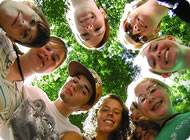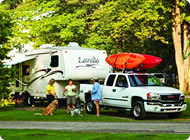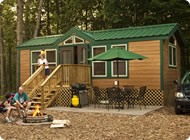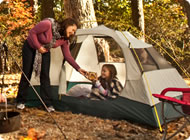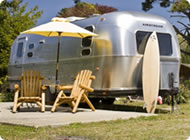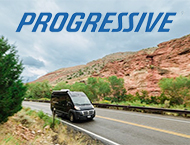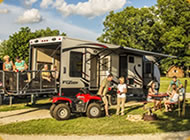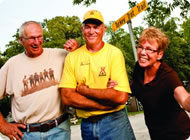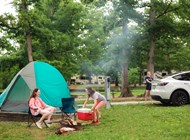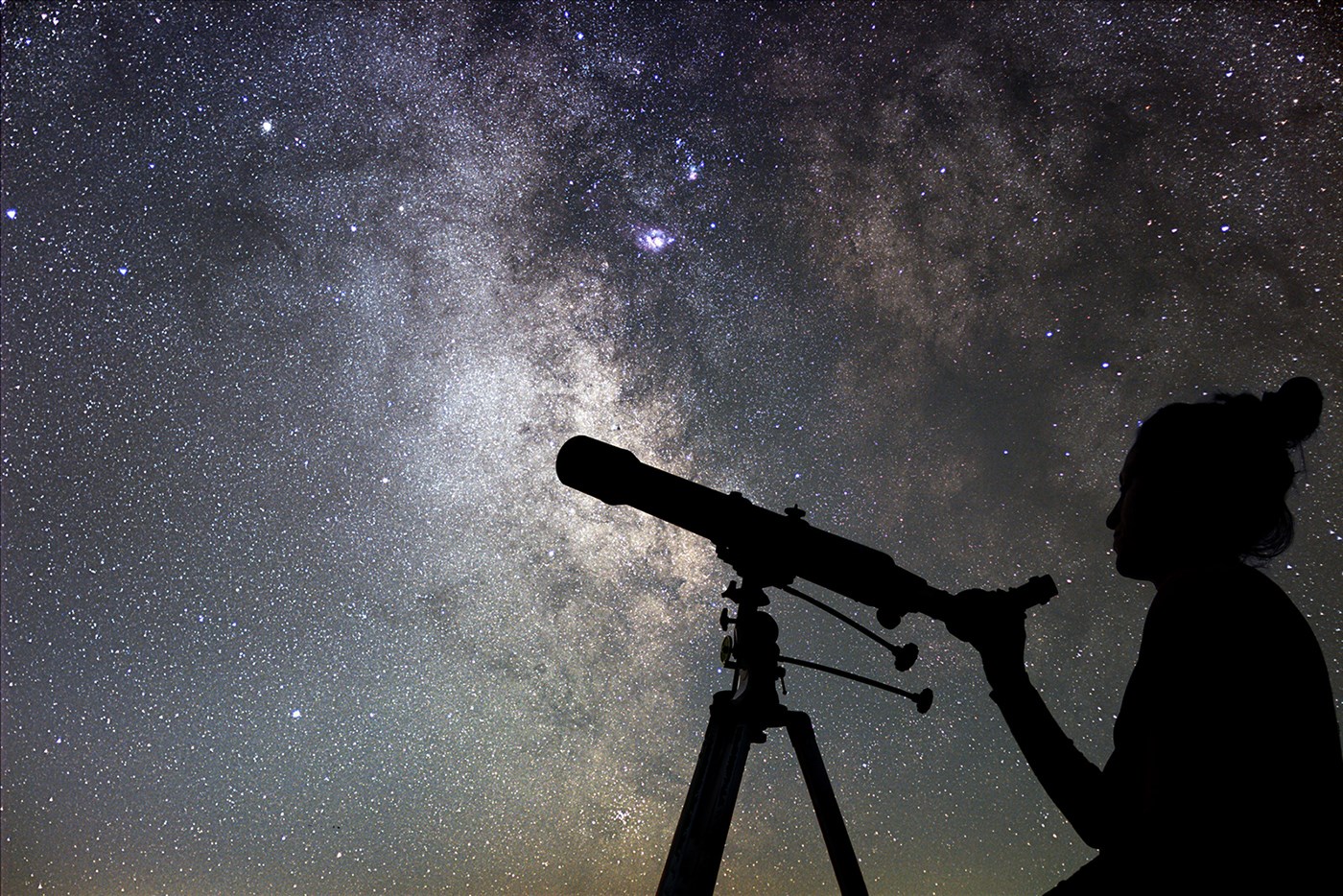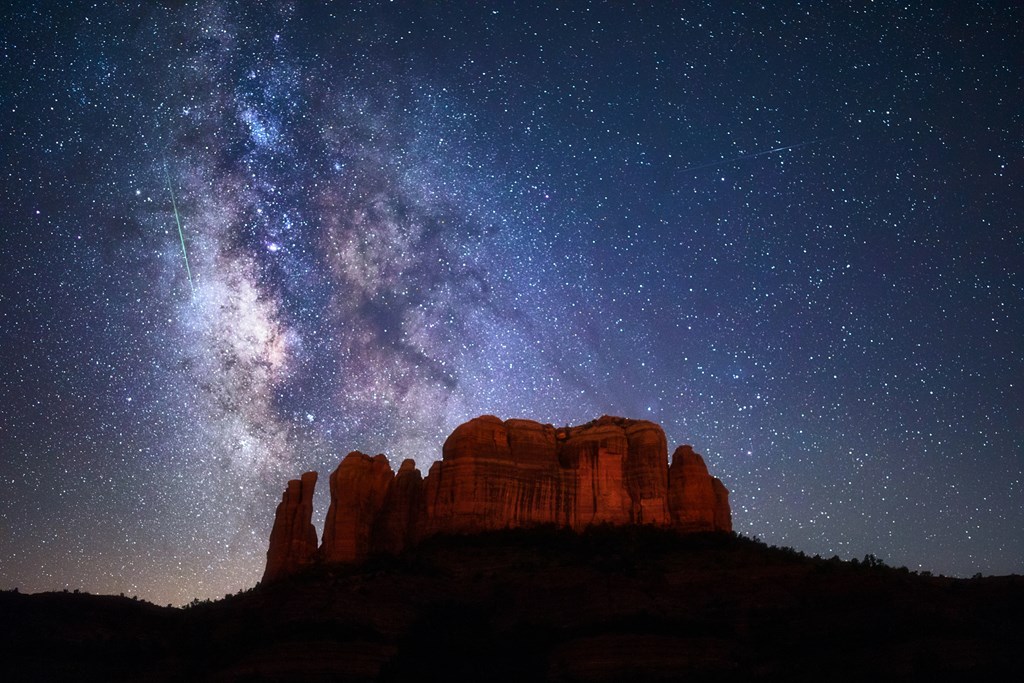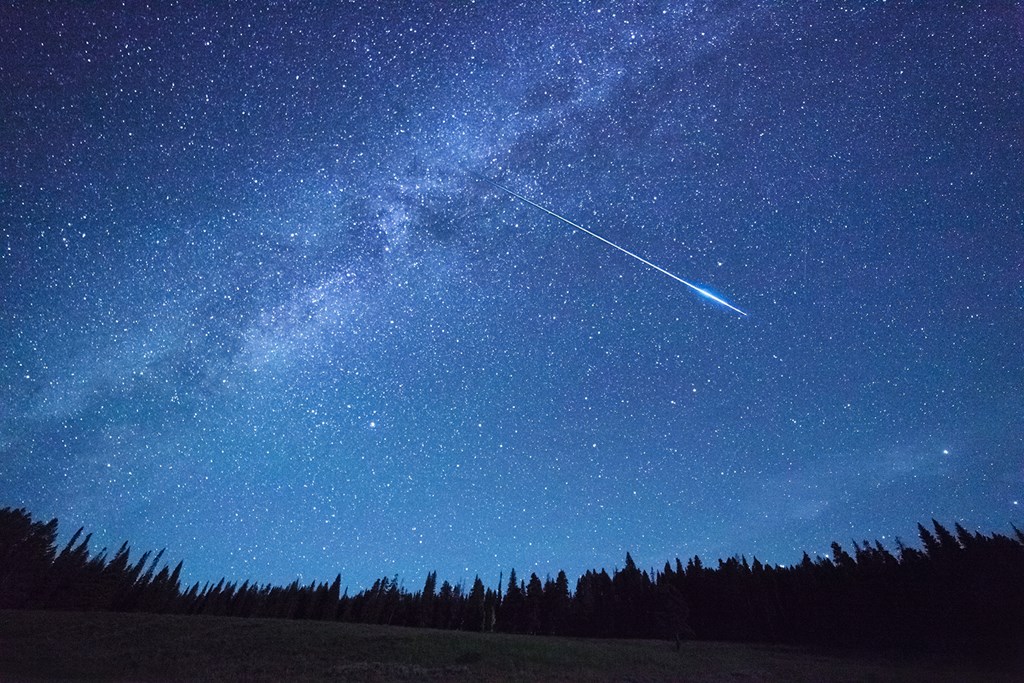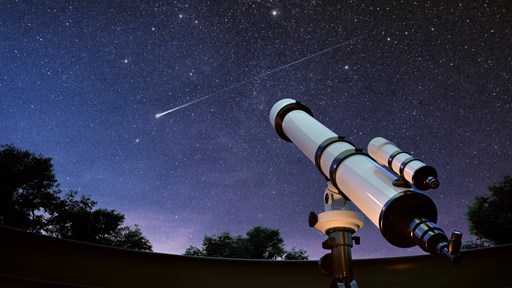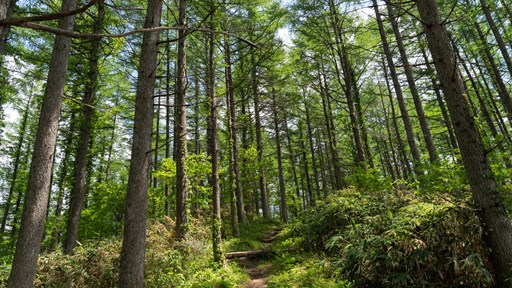When I first bought my campervan I now affectionately call “Jolene” (equipped, of course, with Dolly Parton’s album mounted on the wall), I spent a lot of the first month parked alone at KOA campgrounds and national forests.
While I thought I was prepared for the loneliness that would accompany nights on the road, away from the daily routine of my life before in Boulder, Colorado, I soon realized that it wasn’t so much the loneliness that started to push on me over the weeks, but more the perceived idleness of time. Sure, I had a keyboard I played at night. I had a curious cat, who was always eager to exit the van and head out on a (leashed) adventure. There were chores to be done and food to be made. Even books to be read. But many times at night, I started to find myself idle.
It’s during this period, sitting in my camp chair at my campsite, that I began to look up at the stars and question why I could only point to one constellation in the whole grand sky. I figured I had the time to invest so I began to use those quiet nights to familiarize myself with the stars and constellations.
There’s really nothing quite like staring up at a vast, star-filled sky after a day of camping. Away from city lights, places like KOA campgrounds provide the perfect setting for a stargazing experience. Slowly, I started to recognize and learn basic constellations and the stories behind them. It’s a fun party trick I’ve been able to take with me in the years that follow.
So whether you’re a first-time camper or a seasoned outdoor enthusiast, learning to identify constellations is a great way to connect with the night sky and spend more quality time with the world around you. Here’s how.
Best Constellations for Beginners
You don’t need a telescope to enjoy stargazing as I first feared I might. The good news is that many constellations are easy to spot with the naked eye! Here are a few of the most recognizable ones in North America:
1. The Big Dipper (Ursa Major)
One of the most famous star formations, the Big Dipper is easy to find and can help you locate other constellations. Look for seven bright stars forming a ladle shape in the northern sky. The two stars at the edge of the “bowl” (Dubhe and Merak) point directly to Polaris, the North Star.
2. Orion the Hunter
Visible in the winter and early spring in the Northern Hemisphere, Orion is one of the easiest constellations to recognize. Look for three bright stars in a row—these make up Orion’s Belt. Two stars above the belt (Betelgeuse and Bellatrix) mark Orion’s shoulders, while two below (Rigel and Saiph) represent his feet.
3. Cassiopeia the Queen
Shaped like a giant “W” or “M” in the northern sky, Cassiopeia is visible year-round. Use this constellation as a great guidepost for other celestial wonders, including the Andromeda Galaxy. The deeper of the two “V” shapes that form Cassiopeia is the star Schedar. If you use this star as an arrow, it will point you to the Andromeda Galaxy.
4. Cygnus the Swan (The Northern Cross)
Best seen in the summer, Cygnus is shaped like a cross with its brightest star, Deneb, marking the tail. It appears to be flying through the Milky Way, making it a stunning sight against the night sky.
5. Leo the Lion
If you’re camping in the spring in the Northern Hemisphere, look for a backward question mark—this is Leo’s head. The bright star at the base of the question mark, Regulus, is one of the brightest stars in the night sky.
Tips for a Better Stargazing Experience
-
Choose a dark location. Campgrounds that are away from city lights provide great conditions for stargazing.
-
Let your eyes adjust. It takes about 20–30 minutes for your eyes to fully adapt to the dark. Avoid bright screens or flashlights.
-
Use a red light. If you need light, use a flashlight with a red filter to preserve your night vision.
-
Check the weather. A clear, moonless night will provide the best visibility for stargazing.
Best Apps for Stargazing
If you’re new to stargazing, technology can help you navigate the night sky. These apps make it easy to identify constellations and planets:
-
Star Walk 2 (iOS, Android) – Point your phone at the sky, and this app will label constellations, planets, and satellites in real-time.
-
SkyView (iOS, Android) – A great augmented reality (AR) app that overlays constellation names on your screen as you move your phone.
-
Stellarium (iOS, Android, Desktop) – A detailed astronomy app that shows constellations, planets, and deep-sky objects.
-
NASA App (iOS, Android) – Provides updates on celestial events, including meteor showers and eclipses.
Great KOA Campgrounds for Stargazing
KOA campgrounds are near some of the best dark sky destinations in the U.S. From the Adirondack wilderness to desert skies, each location offers a great opportunity to view the cosmos. Here are a few to consider:
-
Cherry Springs State Park in Pennsylvania, known for its astronomy field and “star parties,” pairs well with a stay at Dubois / Treasure Lake KOA Holiday.
-
In Arizona, the Grand Canyon / Williams KOA Journey provides a home base for constellation tours at one of the world’s most well known natural wonders.
-
For those seeking a unique combination of history and stargazing, Dinosaur National Monument in Colorado and Utah offers an ancient setting where the past and the cosmos collide, with the Vernal / Dinosaurland KOA Holiday just nearby.
-
As we mentioned absolve, the Adirondacks Lake Placid / Whiteface Mtn. KOA Holiday is also a great option for viewing.
-
Everyone knows, “The stars at night are big and bright deep in the heart of Texas.” That’s partly because Texas has plenty of remote, expansive deserts coupled with low humidity, significantly reducing light pollution. As a result, Big Bend National Park is a fantastic place to hike and stargaze. Nearby KOA campgrounds include Las Cruces KOA Journey and San Angelo KOA Holiday.
Overall, stargazing is one of the best ways to wind down after a day of adventure or during a solo or family camping trip. Whether you’re spotting your first constellation or planning to capture the Milky Way on camera, the night sky offers a spectacular show for all ages. So grab a blanket, step outside your tent or RV, and get to know the sky.
Happy stargazing!
 Lindsey Hall is an award-winning mental health speaker and writer, focusing on what she refers to as “the nitty gritty topics not discussed.” She is the author behind “I Haven’t Shaved in Six Weeks,” a blog written to humanize the stigmas of eating disorders and treatment.
Lindsey Hall is an award-winning mental health speaker and writer, focusing on what she refers to as “the nitty gritty topics not discussed.” She is the author behind “I Haven’t Shaved in Six Weeks,” a blog written to humanize the stigmas of eating disorders and treatment.
Through her published writing and work in public relations, she has had the privilege of speaking around the world on nuanced topics such as Body Dysmorphic Disorder, Exercise Addiction, Orthorexia and other eating disorder behaviors, and has been featured in publications including TODAY Show, CBS, Washington Post, Cosmopolitan, Women’s Health, SheKnows, SHAPE Magazine, Refinery29, and more.
An outdoor enthusiast (and Colorado girl) at heart, Lindsey loves to hike wherever possible and is currently focused on taking her white Dodge Ram ProMaster van around the world with her lovely cat, Smudges. Together, they have traveled in over 40 states and even across borders into Canada to conquer the trails!
Follow Lindsey Hall on Instagram.








